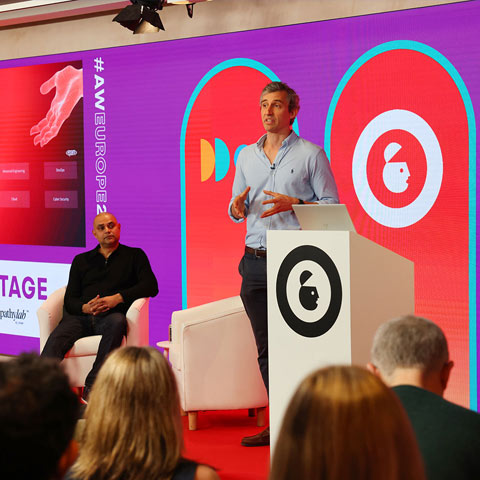Five Reasons to Personalise


This post explains why it makes sense to start personalising your website now.
The days of mass marketing will soon be over. Serving the same web content to everyone has run its course. As visitors, we expect content to be relevant to us.
Personalisation turns the old one-to-many broadcasting model on its head: a personalised website adapts its content to the visitor according to his or her personal preferences and needs. Personalised content is more relevant and meaningful than any vanilla variety.
The goal is to build a relationship in which the visitor indicates their interest and the website serves matching content. Of all possible content variants that could be offered, personalisation finds the one that fits best.
Personalisation is mainstream
While I worked on component personalisation for Magnolia I spoke with clients from travel to telecom, with partners and agencies, with authors and developers. Web content professionals agree that personalisation has moved beyond the hype into mainstream and is finally starting to produce returns.

Gartner: Digital Marketing Hype Cycle 2015
Relevance
Frankly, it’s inconsiderate to serve irrelevant or redundant web content to visitors today for two reasons:
- Personalisation tools are widely available. Pick any major CMS (content management system) and you will find personalisation features. You can target content to visitors by channel, device, location, date, demographics, past behavior and preference. Sure, the first attempts at delivering personalisation tools fell rather short on user friendliness. But many have matured since then. At Magnolia, we saw a need for marketers to get their hands on tools that let them focus on the task instead of running down to IT to get support. Ideal personalisation tools require no developer involvement beyond the initial setup of targeting attributes. This means that authors can produce, manage and target content on their own.
- There is a wealth of data about visitors. As consumers, our actions are recorded at every opportunity. Our social graph is mapped in detail. So much is known about our preferences that, as consumers, we start to see un-personalised content as noise. Irrelevant offers stick out. “Why would you even suggest that?” Producing and maintaining content that misses the mark costs money. It’s advertising dollars thrown to the wind.
There is, however, one valid excuse for not personalising content to every visitor: scale.
“The hardest part of the business is how you create content at scale while making it relevant.” — Brian Harrington, Zipcar
On one hand, content needs to be tailored to the visitor. On the other, it needs to be reusable, otherwise production won’t scale up. This is quite a conundrum. According to Forbes, marketers will not be able to write or spend their way out of this problem.
If you look at scalability as a content production problem, indeed there is no obvious way out. Producing creative, relevant content takes time. While natural language generation software can produce human-sounding narrative from product data you need a large volume of comparable products with similar properties for NLG to be more efficient than human authors. Consumers are also rather sensitive to mechanical, repetitive language — they can sniff it out.
However, if you look at scalability as a content management problem there are solutions.
- Modular content is one. Create reusable content blocks that can be reassembled to meet personalisation needs. This approach, also known as content pool or content hub, assumes that content lives in a system that is capable of managing pools of structured, reusable content elements. Importantly, the content is not stored on web pages. It is completely independent of presentation and channel. (“There is no page” should be the subject of another blog post.)
- Tagging is another. You probably have relevant content on your site but it is not categorized for findability and reuse. Apply tags that match desired visitor attributes. A travel website might tag their tours as active, cultural or family. A sensible, human-readable taxonomy is a great place to start because it allows you to experiment with personalisation manually first. Step into the visitor’s shoes and preview the digital experience to make sure it makes sense. Eventually you can hand the targeting job to an AI. Matching tags to visitors is a hopelessly boring task. Perfect job for a rule engine.
Individuals vs. segments
Today, marketers need to reach audiences-of-one. Individuals like you and me. Each of us different with unique goals and needs.
While segmenting an audience into homogenic groups (visitors from Europe, visitors interested in technology, visitors with red hair) is a perfectly valid approach to understanding who your visitors are, segments still lump many visitors into the same bucket. Today, consumers expect content that is relevant for them as an individual.
A travel company client I work with stores the visitor’s holiday search terms in a cookie: destination, travel dates, number of adults, number of kids and so on. As the visitor looks for the perfect holiday the site keeps appending each new search into the cookie. With a detailed search history the company can draw a more reliable picture of what type of travel the visitor is interested in. It’s hyper-specific in a thoughtful way.
Compiling searches over time also helps the travel company avoid jumping to conclusions. If a visitor searches for a holiday in Orlando once they could be doing it as a favor for a friend or just out of curiosity. However, if the search becomes a more frequent pattern it’s more likely the user is genuinely interested in the destination and offering personalised content will pay off.
Thoughtful remembrance
"Engage customers! Build loyalty!"
That’s how personalisation is sold to marketers. Unfortunately, engagement and loyalty are marketing buzzwords that are hard to express in concrete terms. Let’s replace the boilerplate text with goals you can realistically achieve with personalisation.
No customer wishes to be “engaged”. Customers want services and products that are thoughtful and relevant. They may want to be occasionally delighted with creative copy, and for the rest of the time be left alone.
"We do not wish to be “engaged.” The belief that we do is just one example of the industry smoking its own exhaust. — Doc Searls, Dear Advertising, We are not an audience"
Even the most admired digital marketing companies in the world are still learning the difference between engagement and repetition. Our attempts at engagement frequently end up as woefully misguided bombardment with identical offerings because as marketers we confuse engagement with repetition.

I propose replacing engagement with Dan Stasiewski’s term thoughtful remembrance.
"Customer loyalty results when a brand can form a relationship with the buyer through acts of thoughtful remembrance. For example, knowing their preferences, respecting the customer, not rushing them toward a desired action."
Examples where personalisation can you help remember the visitor:
- Recover abandoned shopping carts by reminding the visitor where they left off, even as they return to the site after a few days.
- Upsell the next level product or service since you know what the user currently holds.
- Suggest a relevant local event based on a purchase.
These are all thoughtful acts, respectful to the customer and as such more likely to elicit a positive reaction to your brand and your personalisation attempts.
Customer journey
There is no such thing as instant loyalty. Loyalty must be earned over time. The idea that we can lure the customer back to the site by amplifying the message is just ludicrous.
According to Adobe, the average consumer goes through a minimum of five touch points with a business before converting. Such a long customer journey needs careful design to make each touchpoint part of a consistent digital experience.
The HubSpot inbound marketing model is a great illustration of the customer journey. At each stage of the journey, you can personalise content to the needs and wants of the customer. Content should get narrower, more focused, and more relevant as the visitor moves to the right.

Some examples how personalisation can help at each stage:
- Attract: Acknowledge and greet visitors who come from your social media posts. You know which campaign they came from since you set it up. Try serving some referral-specific content, even just “Hi Facebook user!”.
- Convert: Create a personalised call-to-action at the end of a blog post. At this point you already know the reader is interested and aware of your offering.
- Close: Include the first name of the recipient in an email to boost the click-through rate.,
- Delight: Personalise your home page for returning customers. In the US, 40% of revenue comes from returning or repeat purchasers, who represent only 8% of all visitors. (Forrester)
One customer journey toward one conversion or long-term brand preference.
Want more like this?
Want more like this?
Insight delivered to your inbox
Keep up to date with our free email. Hand picked whitepapers and posts from our blog, as well as exclusive videos and webinar invitations keep our Users one step ahead.
By clicking 'SIGN UP', you agree to our Terms of Use and Privacy Policy


By clicking 'SIGN UP', you agree to our Terms of Use and Privacy Policy
Other content you may be interested in
Categories
Categories
Categories

Want more like this?


Want more like this?
Insight delivered to your inbox
Keep up to date with our free email. Hand picked whitepapers and posts from our blog, as well as exclusive videos and webinar invitations keep our Users one step ahead.
By clicking 'SIGN UP', you agree to our Terms of Use and Privacy Policy




![[Podcast] Record Once, Dominate Everywhere - AI Video Editing [Podcast] Record Once, Dominate Everywhere - AI Video Editing](https://images.bizibl.com/sites/default/files/lisana-agorapulse-480.jpg)




